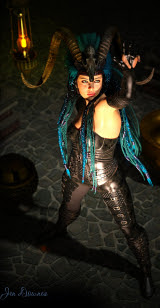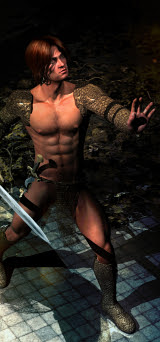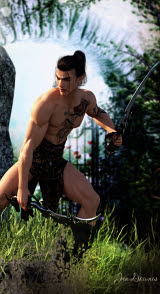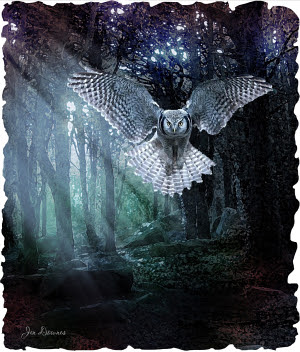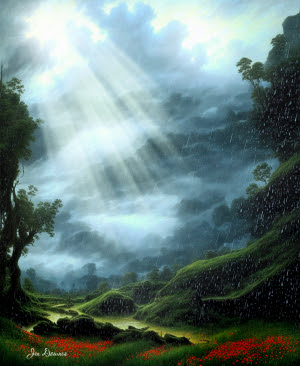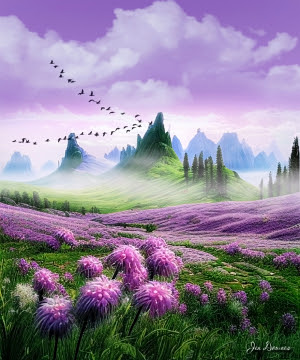EDIT: 404 error ... with the cancellation of a feeder account (Photobucket or Flickr or whatever), a number of images have ... gone. Can't find the originals to replace them, so the best I can do is preserve the original text. Sorry.
Just before Christmas I was asked, "Why do you need to do post production work on a render? Can't you get the render right without having to paint it later?"
And that's a very fair question, simple to ask, not so simple to answer. So here goes.
There's at least four reasons for doing post work, that I can think of, just offhand. The first is that getting the 3D scene 100% right could easily take far more time than you have available. It could take an hour, fiddling with the last detail, and if you're our of time, then being able to paint over the problem in thirty seconds could be a very attractive solution!
Also, you could be having problems with the lights. 3D lights in DAZ are as difficult to wrangle as lights in a real, live studio. Sometimes you just can't control the glare and reflection. Say you're trying to fill in a shadow, but you don't want a hell of a lot of "glare" on the model's face. You might simply not be able to do this effectively, even with "cheat lights." The truth is, professional photographers and movie makers use digital effects in post to do these things. The principle is the same. (In the olden days when we worked in darkrooms, you used to be able to "dodge" and "burn" your photos while they were still under the lamp, exposing onto the paper. You had a circular piece of paper on the end of a wire, and you waved this around between the lamp and the paper ... it stopped light getting onto a part of the paper you wanted to come out lighter. This was called "dodging" the image. There was also a technique that was just the opposite -- you masked part of the area to prevent it from exposing, and you "burned" in the other, un-masked part of the image. So if you're working in GIMP and you see your dodge and burn controls, now you know where their weird names come from!)
A similar reason for doing a bit of post work is to change the color of something. Sometimes, the color something looks before the render, and after, are two very different colors. Now, you might be able to correct this in the surfaces tab -- but only if you can get hold of exactly the part of the model you want to change color. It all depends how the model was built. Sometimes you can't get hold of one of the pieces, and that's the exact one need to change. You could try changing the color of it with the lights ... but there's a good chance that setting colored lights will change the color of other things in the scene, which you don't want. So ... paint it!
The last great reason for post work is...
...sometimes the skinmap you want to use doesn't fit quite right when you pose the model. Now, there's nothing you can do to get the poses and renders you want. The only option left is to zap a bit of airbrushing over the seams later. You might have to click on the pic, above, to see the work that was done, but -- there you are. Easy fix.
So there's plenty of reasons for doing post work -- it's not all about being lazy and not working enough with the 3D software, or not knowing enough to drive the software and make it all come out right. Also, it's worth noting that photographers and movie makers use very similar techniques, so -- go for it.
Jade, 28 December (Proclamation Day)




















